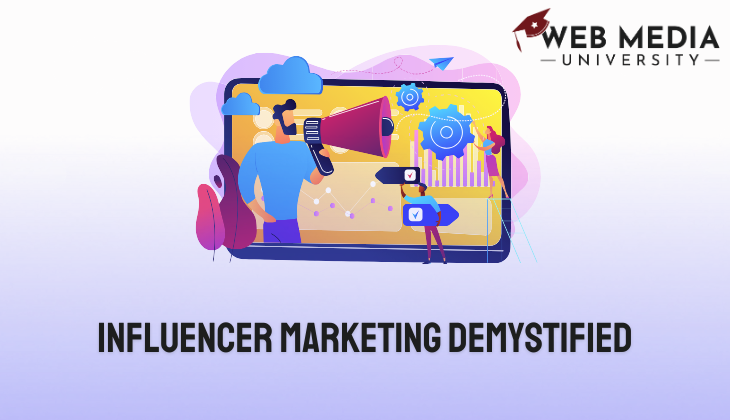Latest Marketing Tips
Influencer Marketing Demystified: How to Partner with Influencers and Boost Your Brand’s Reach

In today’s digital age, influencer marketing has become a cornerstone strategy for brands looking to expand their reach, build credibility, and connect with their target audience. With social media platforms buzzing with influencers of all sizes and niches, the opportunities for brands are endless. However, navigating the world of influencer marketing can be daunting without a clear understanding of the intricacies involved. In this comprehensive guide, we’ll demystify influencer marketing, break down the key components of influencer partnerships, and provide actionable insights to help you maximize their impact on your brand.
Understanding Influencer Marketing
Before diving into the nitty-gritty of influencer partnerships, let’s first understand what influencer marketing is and why it’s so effective. Influencer marketing involves collaborating with individuals who have a dedicated and engaged following on social media platforms to promote your brand, products, or services. These influencers, often referred to as content creators, have built credibility and trust with their audience, making their recommendations and endorsements highly influential.
According to a report by Influencer Marketing Hub, the influencer marketing industry is projected to reach $13.8 billion in 2021, demonstrating the immense growth and potential of this marketing strategy. Additionally, a study by Nielsen found that 92% of consumers trust recommendations from individuals over brands, highlighting the effectiveness of influencer marketing in driving consumer behavior.
Choosing the Right Influencers
The key to a successful influencer marketing campaign lies in choosing the right influencers to partner with. When selecting influencers, consider factors such as audience demographics, engagement rates, content quality, and alignment with your brand values and objectives. Micro-influencers, who typically have smaller but highly engaged followings, can be particularly effective for niche markets and specific target audiences.
For example, if you’re a beauty brand targeting Gen Z consumers, collaborating with a micro-influencer known for their authentic beauty tutorials on TikTok may yield better results than partnering with a macro-influencer with a broad, less engaged audience.
Building Authentic Relationships
Once you’ve identified potential influencers to partner with, it’s essential to build authentic relationships based on mutual trust and respect. Approach influencers with genuine interest in their content and values, and take the time to understand their audience and objectives. Personalized outreach tailored to each influencer’s unique style and interests is key to establishing meaningful partnerships.
For instance, instead of sending a generic email template to multiple influencers, consider reaching out with a personalized message highlighting specific aspects of their content that align with your brand values and campaign objectives. This personalized approach demonstrates your genuine interest in collaborating and increases the likelihood of a positive response.
Collaborating on Campaigns
When collaborating with influencers on campaigns, transparency and communication are paramount. Clearly define campaign objectives, expectations, deliverables, and compensation upfront to avoid misunderstandings or misalignment down the line. Provide influencers with creative freedom to showcase your brand authentically within their content, while ensuring that your brand messaging and guidelines are communicated effectively.
For example, if you’re launching a new product, consider inviting influencers to an exclusive launch event or sending them a personalized package with the product to create buzz and excitement among their followers. Encourage influencers to share their honest opinions and experiences with your product, as authenticity is key to building trust with their audience.
Measuring Success and ROI
After the campaign concludes, it’s essential to measure its success and return on investment (ROI) to evaluate its effectiveness and inform future strategies. Track key performance indicators (KPIs) such as reach, engagement, click-through rates, and conversions to assess the impact of the campaign on your brand’s objectives.
Utilize tracking tools and analytics provided by social media platforms, influencer marketing platforms, and third-party analytics tools to gather data and insights into campaign performance. Compare actual results against predetermined goals and benchmarks to identify areas of improvement and optimization for future campaigns.
Influencer marketing can be a highly effective strategy for boosting your brand’s reach, credibility, and engagement when executed strategically and authentically. By understanding the intricacies of influencer partnerships, choosing the right influencers, building authentic relationships, collaborating on campaigns, and measuring success and ROI, you can unlock the full potential of influencer marketing and drive meaningful results for your brand.
Ready to harness the power of influencer marketing for your brand? Join Web Media University today and gain access to expert-led training courses that will help you master the art of influencer partnerships. Don’t miss out – enroll now and elevate your brand’s presence with influencer marketing!
Enroll in Web Media University’s Influencer Marketing Courses Now!
Remember, with the right strategies and insights, influencer marketing can propel your brand to new heights of success. Embrace the power of influencer partnerships and watch your brand’s reach and impact soar!

Our Alumni

John A. Fallone
Founder of Traininguru Masters

Travis Wagoner
Alumni Relations & Communications Director - Trinity High School

Sara Cullin
Rumpke Senior Corporate Communications Coordinator

Mark Walker
City of Cincinnati Economic Development Division

Lakesha Brown
XD Web Solutions

Laurie Owen
Reach Them Online

Derrick Workman
Boon Multimedia Design
